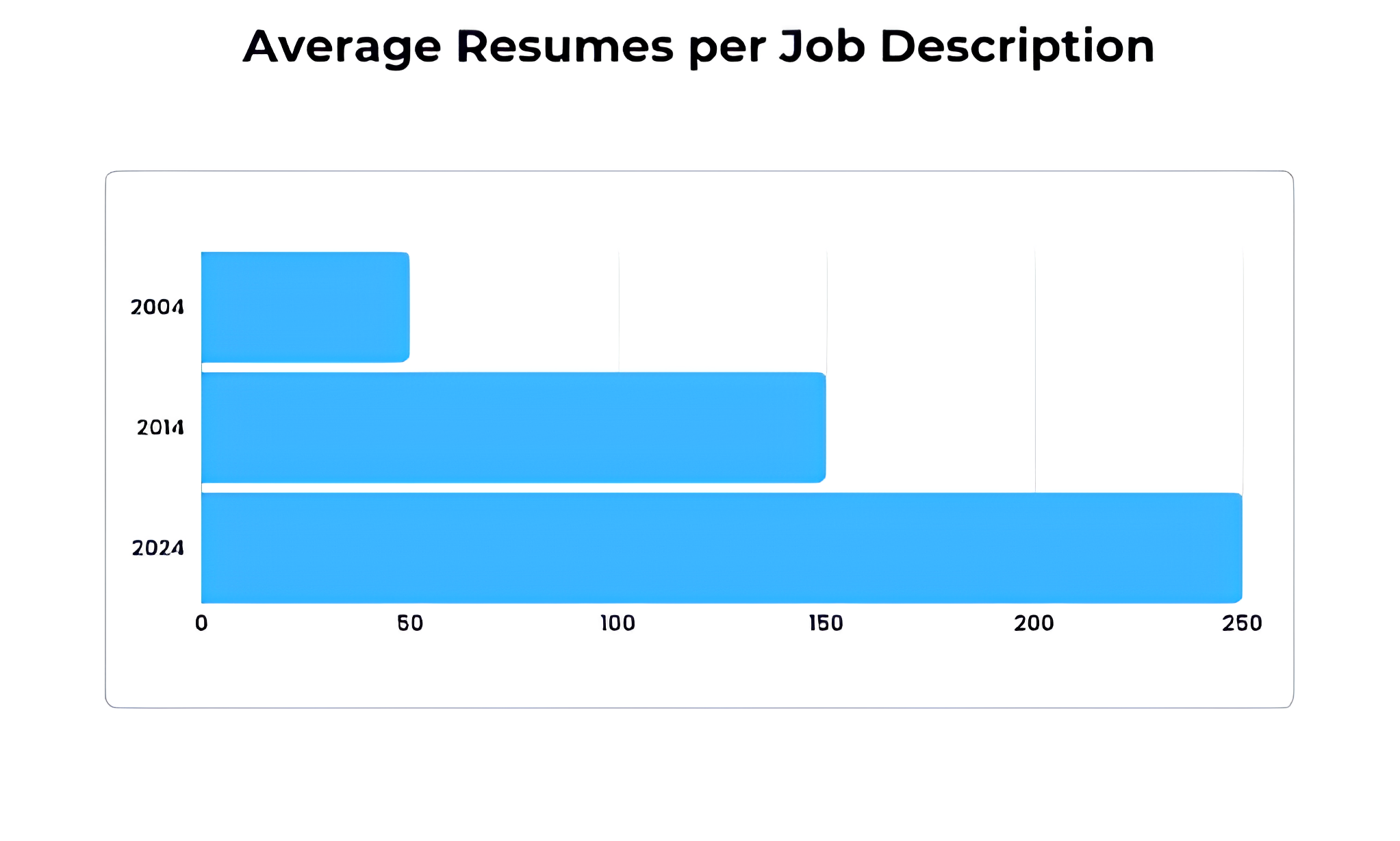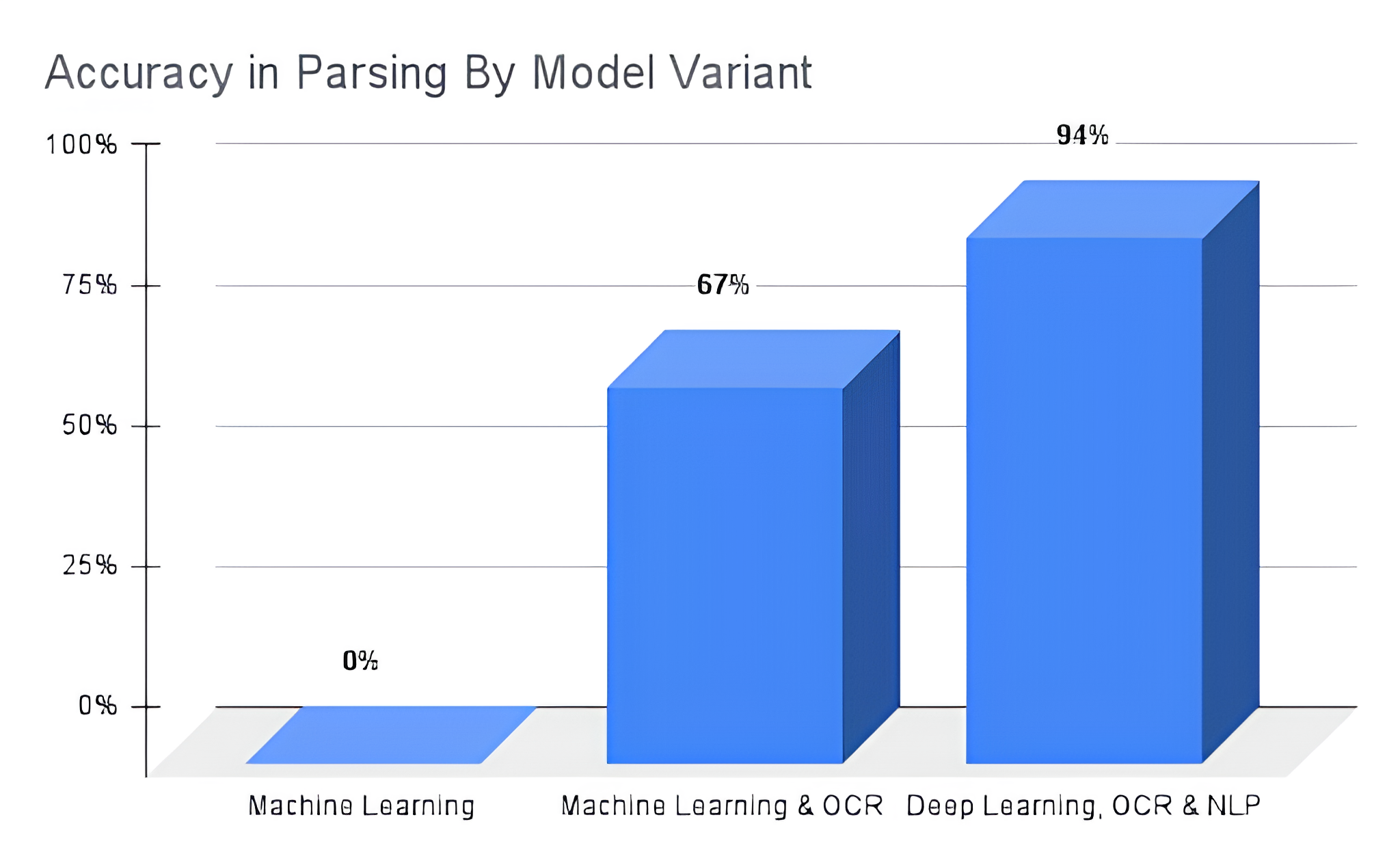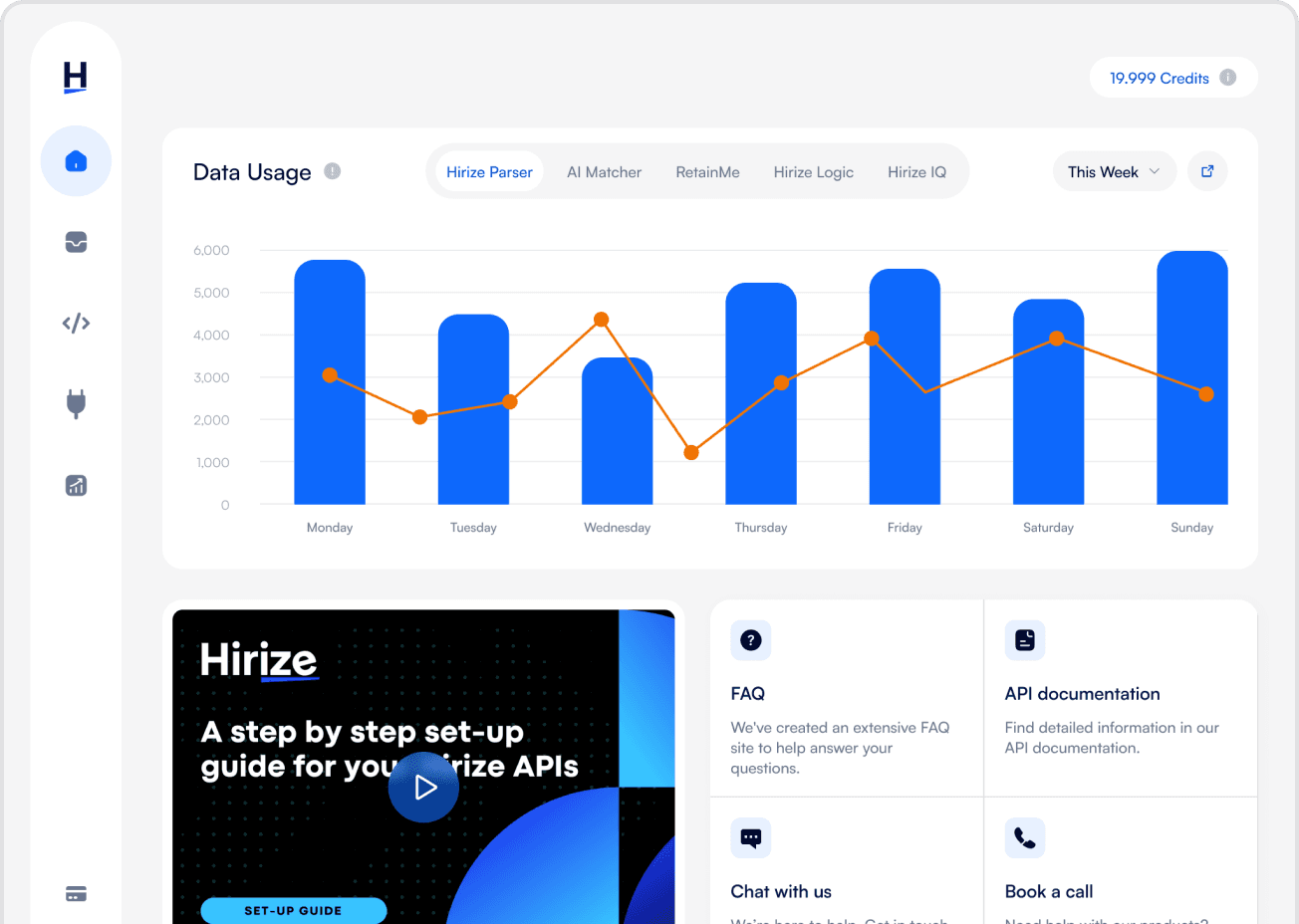superpowers?
Comparative Analysis of ML (Machine Learning) and LLM (Large Language Models) in Resume Parsing
Discover How AI Enhances Recruitment in ML and LLM Resume Parsing: Insights from Esranur Kaygin

Introduction
In recruitment, the goal of hiring quickly and improving the candidate experience is more essential than ever. With AI technology rapidly advancing, it's crucial for recruiters to know which tools are up to date and which ones can best meet the needs of HR departments.
At Hirize, our commitment to innovation drives us to explore these questions daily. In our pursuit of excellence, we’ve put the leading resume parsing and matching technologies under the microscope to benchmark our advancements and genuinely understand the landscape of today's and tomorrow’s HR technology.
Our findings? Adopting cutting-edge technologies isn’t just beneficial; it's a game-changer. In this blog post, we're excited to share the insights from our comprehensive research, highlighting how embracing the latest in AI can redefine recruitment standards.
Understanding the Crucial Role of AI in Modern Recruiting
 Before diving into our research, let's set the stage for why parsing and matching AI technologies have become indispensable tools in the recruitment arsenal.
Before diving into our research, let's set the stage for why parsing and matching AI technologies have become indispensable tools in the recruitment arsenal.
Rewind twenty years, and a job opening would attract between 30 to 75 resumes. Many were hand-delivered, faxed, or sent via early email systems at a time when the internet was just starting to redefine professional landscapes. Job boards were nascent, and remote work was more exception than rule. Handling applications was manageable, even with such manual processes.
Fast forward a decade, and the scenario shifted dramatically. The digital boom meant each vacancy now saw an influx of 100 to 150 resumes. This surge underscored the necessity for AI-driven matching technologies to sift through the applications efficiently, ensuring every candidate had a fair shot.
Today, the landscape has transformed yet again. With remote work becoming the norm and the internet erasing geographical barriers, it's not uncommon for a single job posting to attract over 250 resumes. This explosion of applications, coming in varied formats and from diverse platforms, has pushed traditional parsing methods to their limits. Initially designed for a less complex era, these methods falter against today's challenges: intricate resume layouts, many file types, and the subtle intricacies of language pose significant obstacles to accurate parsing and fair candidate evaluation.
The Challenge: Navigating the Accuracy Gap in Resume Parsing
As the volume of applicants per job posting skyrockets, HR technology platforms—including well-known job boards and Applicant Tracking Systems (ATS)—increasingly depend on external parsing services to manage this deluge. However, a significant challenge arises: these parsing services typically achieve accuracy rates of only 60 to 80%. This suboptimal performance can lead to overlooked qualified candidates, undermining the efficiency and fairness of the recruitment process.
The root of the problem lies in the traditional parsing strategies, which are not fully equipped to handle the complexities of modern resumes. Originally not designed for a digital world, resumes present a unique challenge; they must be transformed into a format that computers can read and understand.
Traditionally, this transformation relied on Machine Learning (ML) and AI models. However, as AI evolves at a breakneck pace, today's models are reaching new heights of sophistication. They're not just "reading" resumes; they're beginning to "understand" them with almost human-like accuracy. Leading the charge in this advanced arena are technologies such as Optical Character Recognition (OCR), Natural Language Processing (NLP), and Large Language Models (LLMs). We decided to put these cutting-edge tools to the test. By analyzing 1000 resumes across three major industries—healthcare, finance, and tech—we evaluated three distinct AI models: a traditional ML-based parser, an ML plus OCR hybrid, and a comprehensive model incorporating OCR, NLP, and LLMs.
Comparative Analysis of Resume Parsers
A Snapshot of the Parsers
Model 1: The Machine-Learning-Based Parser: This model leverages machine-learning algorithms trained on vast amounts of resume data to identify patterns and categorize information within resumes.
Model 2: The Combination Approach: This model combines the power of Optical Character Recognition (OCR) with machine learning. OCR extracts text from any format, while machine learning interprets the patterns within the extracted text.
Model 3: The NLP and Deep-Learning Based Parser (Our Software): This model utilizes Natural Language Processing (NLP), OCR, and deep learning to achieve a sophisticated understanding of human language within resumes. It can extract skills, experiences, and qualifications with exceptional accuracy.
Performance Assessment
Accuracy: Model 1 has the lowest accuracy due to its lack of OCR capabilities, we’ve used image and pdf-based resumes, and our ML-only parser struggled with them. Model 2 performed better, with OCR boosting its ability to handle diverse resumes. Our software, Model 3, led the way due to the deep understanding provided by NLP and deep learning.
Figure 2.1: Accuracy in parsing by model

Matching: The AI Revolution in Candidate Ranking
AI is pivotal in candidate ranking and matching in today's flooded recruitment landscape. While not yet perfected, technologies like large language models (LLMs) and Natural Language Processing (NLP) are revolutionizing the field with near-human understanding.
Here's where things get interesting. When we pitted the models against an experienced human recruiter, the outcomes were remarkable;
With an impressive 90% accuracy rate, the recruiter could identify the top two candidates among a thousand resumes. However, this meticulous review came at the cost of time, averaging 3.3 hours for the complete process.
Model 2, based purely on Machine Learning, showcased a significant reduction in time, processing the same number of resumes in just 11 minutes. The trade-off, however, was in its accuracy, which dipped to 75%. While faster, it couldn’t match the recruiter’s keenness in pinpointing the best candidates.
Model 3 emerged as the frontrunner, striking an optimal balance between speed and precision. It churned through a thousand resumes in a mere 6.3 minutes while achieving an impressive 86% accuracy rate—nipping at the heels of human accuracy. Thanks to its deep learning capabilities, this model is efficient and continuously improving, promising even greater effectiveness in identifying and understanding candidates.
Embracing AI in Recruitment: A Pathway to Fairness and Efficiency
Over the past decade, AI has made remarkable strides, bringing us to a point where we no longer have to choose between efficiency and accuracy in recruitment. Today's AI models strike a perfect balance, delivering near-human accuracy at unmatched speeds. This evolution signals a future where AI revolutionizes various aspects of recruitment, including parsing and matching.
The shift towards AI-driven recruitment is not about replacing human roles; it's about adapting to the evolving business landscape. With application volumes skyrocketing, AI ensures fair evaluation of every candidate—a task that's become increasingly challenging for human recruiters.
As AI's role in recruitment continues to expand, we're witnessing the birth of a new era—a world where fairness, efficiency, and accuracy are not mere ideals but attainable goals. By embracing AI, we can enhance the recruitment process, creating a more equitable and effective system for all.
Check out Hirize's resume parser now!
superpowers?



